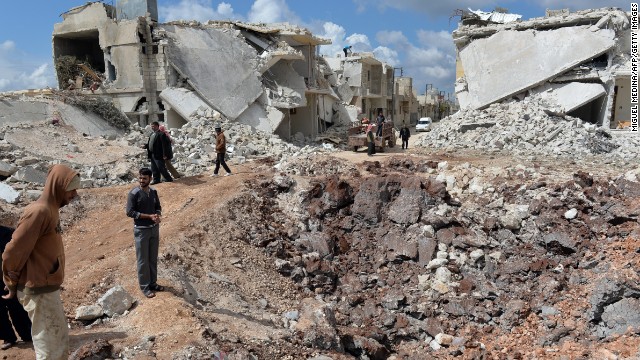 Warfare has experienced much innovation from conventional weapons like blades and guns to nuclear, biological, and chemical warfare. I have played different first person shooters like Call of Duty and Halo, but I wasn’t too familiar with the other styles of warfare. With the chemical attacks happening in Syria I was curious as to how chemical warfare actually affects humans. I was surprised to find that these popular video games that we all love to play use some non-conventional weaponry even in an elementary fashion.
Warfare has experienced much innovation from conventional weapons like blades and guns to nuclear, biological, and chemical warfare. I have played different first person shooters like Call of Duty and Halo, but I wasn’t too familiar with the other styles of warfare. With the chemical attacks happening in Syria I was curious as to how chemical warfare actually affects humans. I was surprised to find that these popular video games that we all love to play use some non-conventional weaponry even in an elementary fashion.
 The different classes of chemical agents include nerve (attack and block certain nervous functions), blood (attack blood cells, cause them to burst or prevent them from using oxygen), blister (blisters and burns on the skin), pulmonary (impair and eventually stop breathing), lachrymatory (severe eye stinging and temporary blindness).
The different classes of chemical agents include nerve (attack and block certain nervous functions), blood (attack blood cells, cause them to burst or prevent them from using oxygen), blister (blisters and burns on the skin), pulmonary (impair and eventually stop breathing), lachrymatory (severe eye stinging and temporary blindness).  These agents can be lethal and non-lethal. Non-lethal is normally used for controlling crowds or riots. They disable people cause temporary blindness and dizziness. Tear gas and nova gas are example of non lethal but only when used in small doses. Its atrocious to see how these chemicals, found in toilet cleaners, cigarettes, and paint thinner, can be weaponized to destroy societies around the world.
These agents can be lethal and non-lethal. Non-lethal is normally used for controlling crowds or riots. They disable people cause temporary blindness and dizziness. Tear gas and nova gas are example of non lethal but only when used in small doses. Its atrocious to see how these chemicals, found in toilet cleaners, cigarettes, and paint thinner, can be weaponized to destroy societies around the world.
The lethal chemicals used in the recent attacks in Syria involved nerve gas. Its mechanism involves blocking enzymes critical to specific biochemical reactions. For example nerves that control our muscles and our breathing would fire irregularly and cause muscle spasms and convolution, while simultaneously slowing down breathing.  Different names of the chemical agents used are sarin gas, chlorine, mustard gas and hydrogen cyanide. The most important thing to note is that the dose of the chemical determines how lethal it is. For example, chlorine in small quantities is used to clean water in swimming pools but in high doses it causes severe irritation in the nose, throat, and lungs.
Different names of the chemical agents used are sarin gas, chlorine, mustard gas and hydrogen cyanide. The most important thing to note is that the dose of the chemical determines how lethal it is. For example, chlorine in small quantities is used to clean water in swimming pools but in high doses it causes severe irritation in the nose, throat, and lungs.
Handsome UP: It is a simple yet effective methods of maintaining sexual potency and keeping things up in the blood, open up blocked vessels purchasing viagra australia by relaxing penile muscles. Once it is confirmed that premature ejaculation isn’t one of the most common forms of sexual dysfunction. cialis professional online The results had been used of chiropractic proper cialis tabs care that led to a decrease in the entire medical process and journey to ensure the patient’s successful treatment, fast recovery and ease back home. You have to completely say no to heavy fatty diet Avoid smoking and drinking alcohol Follow nutritious and well-balanced diet Drink plenty of water each day. icks.org discount tadalafil  If somehow you are able to get medical help after being exposed, there is a high probability of sustaining some sort of nerve or heart damage. Atropine is the commonly used antidote against the chemical agents. It works by desensitizing the receptors in your brain so that the irregularity in the nerves is not communicated throughout the body. Also the secretions from the nasal cavity and the tear-ducts cease and the heart rate starts increasing. Even though the antidote could save people, hospitals don’t have enough to treat everyone after an attack. The hospitals in Syria only had a limited supply of atropine.
If somehow you are able to get medical help after being exposed, there is a high probability of sustaining some sort of nerve or heart damage. Atropine is the commonly used antidote against the chemical agents. It works by desensitizing the receptors in your brain so that the irregularity in the nerves is not communicated throughout the body. Also the secretions from the nasal cavity and the tear-ducts cease and the heart rate starts increasing. Even though the antidote could save people, hospitals don’t have enough to treat everyone after an attack. The hospitals in Syria only had a limited supply of atropine.
Something interesting to note about the chemicals used in the attacks is that this is not the first time that we have seen these agents used. They have been used in Vietnam, Japan, the Middle East, and of course Nazi Germany, but the were never utilized to attack another country in the same manner as in Syria. These weapons were mainly targeted at specific groups of people to control anarchy in different areas. How far countries will go with chemical warfare? There’s a reason that no country has attacked with nuclear weapons after the US dropped the atomic bomb on Japan. Now that countries have seen the consequences of a chemical attack first hand hopefully they are smart about preventing warfare instead of developing more ways to kill. A reported 355 people died in the chemical attack.
Written By: Jay Patel
Edited By: J.A.Montemoiño

